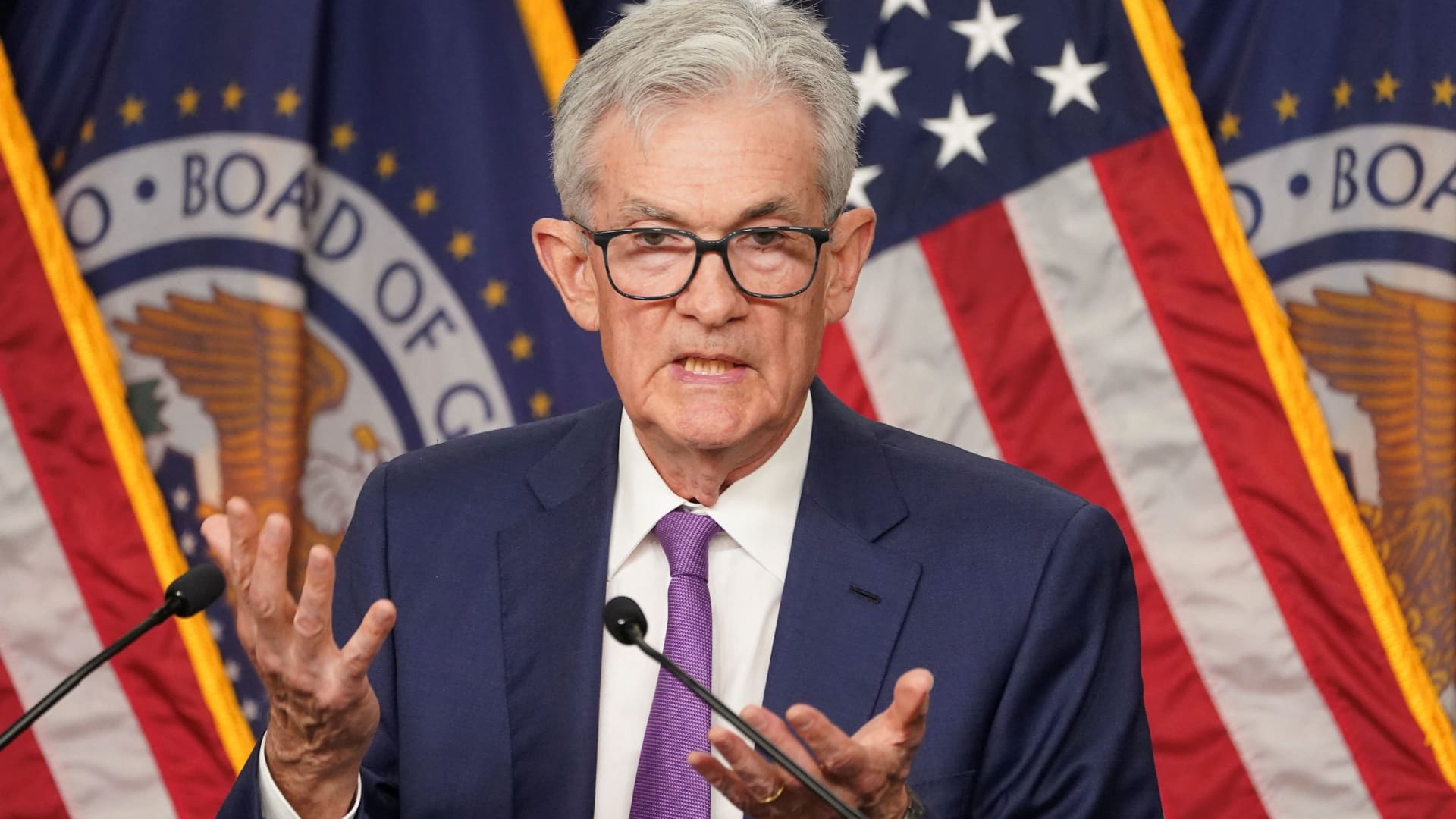The Federal Reserve on Wednesday kept its key interest rate unchanged and signaled that just one cut is expected before the end of the year.
With markets hoping for a more accommodative central bank, Federal Open Market Committee policymakers following their two-day meeting took two rate reductions off the table from the three indicated in March. The committee also signaled that it believes the long-run interest rate is higher than previously indicated.
New forecasts released after this week’s two-day meeting indicated slight optimism that inflation remains on track to head back to the Fed’s 2% goal, allowing for some policy loosening later this year.
“Inflation has eased over the past year but remains elevated,” the post-meeting statement said, echoing language from the last statement. In the only substantive change, the new statement followed with, “In recent months, there has been modest further progress toward the Committee’s 2 percent inflation objective.”
The previous language said there had been “a lack of further progress” on inflation.
Traders seemed encouraged by these comments, with the S&P 500 jumping to a record Wednesday after the statement was issued.
Aggressive cutting seen for 2025
The committee, in its closely watched “dot plot” of individual participants’ rate expectations, did indicate a more aggressive cutting path in 2025, with four reductions totaling a full percentage point anticipated, up from three.
For the period through 2025, the committee now sees five total cuts equaling 1.25 percentage points, down from six in March. If the projections hold, it would leave the federal funds rate benchmark at 4.1% by the end of next year.
Another significant development occurred with the projection for the long-run rate of interest, essentially a level that neither boosts nor restricts growth. That moved up to 2.8% from 2.6%, a nod that the higher-for-longer narrative is gaining traction among Fed officials.
In a further indication of a hawkish bent from central bankers, the dot plot showed four officials in favor of no cuts this year, up from two previously.
Return to 2% target
Elsewhere in the FOMC’s Summary of Economic Projections, participants raised their 2024 outlook on inflation to 2.6%, or 2.8% when excluding food and energy. Both inflation projections were 0.2 percentage point higher than in March.
The Fed’s preferred inflation gauge is the Commerce Department’s personal consumption expenditures price index, which showed respective readings of 2.7% and 2.8% for April. The Fed focuses more on core inflation as a better long-term indicator. The SEP indicates inflation returning to the 2% target, but not until 2026.
The decision and informal forecasts from the 19 meeting participants come during a volatile year for markets and investors’ hopes that the Fed would start easing after it raised benchmark rates to their highest level in some 23 years.
The federal funds rate, which sets overnight borrowing costs for banks but feeds into many consumer debt products, is targeted in a range between 5.25%-5.50%, the result of 11 rate increases between March 2022 and July 2023.
Earlier in the day, as Fed officials were preparing their economic and rate outlooks, the Bureau of Labor Statistics released the consumer price index for May. The report showed that inflation was flat on the month while the annual rate edged lower from the rate in April to 3.3%.
During a press conference, Powell said that report was better than almost anyone had expected, and was factored into the FOMC’s decision.
“We see today’s report as progress and as, you know, building confidence,” Powell said. “But we don’t see ourselves as having the confidence that would warrant beginning to loosen policy at this time.”
Inflation remains well above the Fed’s 2% target, while also being considerably below the peak of just over 9% seen nearly two years ago. Core readings excluding food and energy prices were at 0.2% from the prior month and 3.4% from the year-ago period.
In the first quarter of 2024, economic data softened from where it had been for most of the previous year, with GDP rising at just a 1.3% annualized pace. April and May have been a mixed bag for data, but the Atlanta Fed is tracking GDP growth at 3.1%, a solid pace especially in light of persistent recession worries that have dogged the economy for the past two years.
Inflation data, though, has been equally resilient and has posed problems for central bankers.
The year began with markets expecting a vigorous pace of rate cuts, only to be thwarted by sticky inflation and statements from Fed officials that they are unconvinced that inflation is heading back convincingly to target.
“This is a nothing-burger Fed meeting. They know conditions are improving, but don’t need to rush with rate cuts,” said David Russell, global head of market strategy at TradeStation. “The strong economy is letting Jerome Powell wring inflation out of the system without hurting jobs. Goldilocks is emerging but policymakers don’t want to jinx it.”
